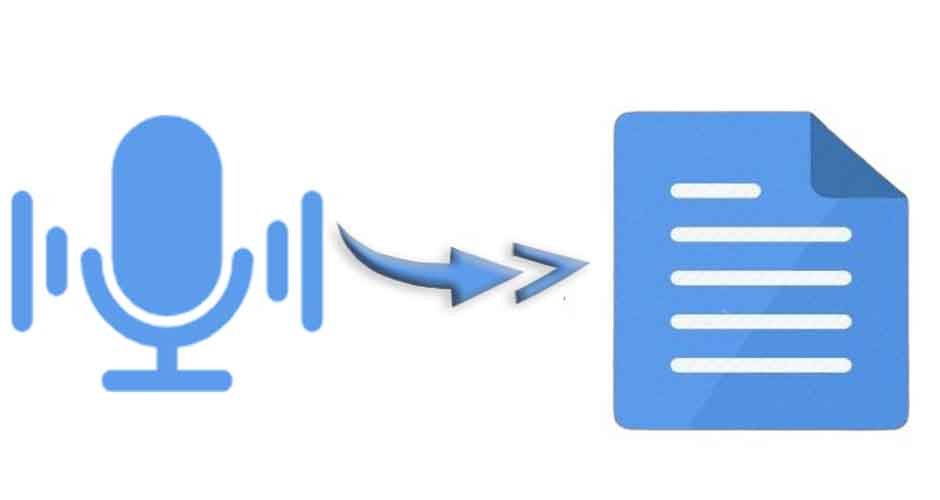Speech-to-Text is a tool that allows you to type out your thoughts using just your voice. This is especially useful for people who have trouble typing with their hands, such as those with disabilities or injuries. Speech-to-text also helps with productivity in general because it speeds up the process of writing by allowing you to focus on content instead of mechanics. But speech-to-text isn’t just useful for those who need it — it also benefits multilingual users and enhances the accessibility of everything from eCommerce sites to social media platforms.
What is Speech-to-Text?
Speech-to-text is the ability to convert spoken words into text. It’s a technology that converts spoken utterances into written language, which can then be edited and formatted like any other document or file. Speech recognition software uses algorithms that analyze the sounds of your voice, identifying those that correspond with letters, numbers, and punctuation marks.
Speech-to-text has been around for decades but has only recently become more mainstream due to its integration with smartphones and other mobile devices such as Amazon Echo (Alexa), Apple HomePod, and Google Home Max speakers. If you have ever used Siri on an iPhone or iPad device then you’ve already had some exposure to this technology!
The Accessibility Revolution
Speech-to-Text proves to be a valuable tool for all. It can help people with disabilities, who rely on speech for communication and independence. It can also help those who don’t speak English, by translating any language into text in real time.
For example, imagine you’re an English teacher working with students who have autism spectrum disorder (ASD). You want them to learn more about your favorite books but they’re not interested in reading without pictures or listening as someone reads aloud from the book itself. Instead of relying on other methods like PECS (Picture Exchange Communication System), which involves showing pictures of objects related to concepts being taught and asking questions about these items’ names before moving on to another picture/word pair; using Speech Recognition software allows teachers like yourself access into their world by allowing them access into yours! By using this technology we are opening up new opportunities for all kinds of people across all walks of life including those with disabilities such as blindness or deafness; learning difficulties such as dyslexia; physical impairments caused by accidents resulting from traffic accidents etcetera.
Multilingual Capabilities
Everyone can benefit from the capabilities of Speech-to-Text, not just those with disabilities. It can be used to boost productivity and improve communication skills. For instance, if you’re involved in a significant project related to the Korean language and wish to ensure the precise recording of your spoken words by your assistant, employing Korean speech-to-text technology can prove invaluable. Then using Speech-to-Text would be an excellent way of making sure that this happens!
If you want to be able to communicate in multiple languages without having knowledge of them yourself (for example: if someone speaks Spanish but doesn’t know how), then Speech-to-Text may be useful as well because it allows people who aren’t fluent in another language yet still need access its benefits – such as translation services – much easier than before possible thanks their ability now having access too!
Boosting Productivity
Speech-to-Text offers its advantages to a broad audience, but especially for those who are looking to boost their productivity.
- Spelling and grammar correct your writing as you type. This saves you time and energy by helping you focus on the task at hand instead of fixing mistakes later in the editing process.
- Speech-to-text programs can be used for dictation or transcription you can dictate your thoughts into an audio recording, then have the computer transcribe it into text that’s ready to be edited or printed out! This is useful if you’re working on something that requires lots of research material (like writing an article about different types of dinosaurs) since typing out all those words would take forever without some kind of automation tool like the one available today.
Speech-to-Text and Inclusivity
Regardless of who you are, Speech-to-Text is a potent tool. It can greatly improve accessibility for people with disabilities, as well as those who don’t speak English fluently or are deaf or hard of hearing.
For example, if you’re deaf or hard of hearing and have an iPhone with Siri enabled (or any other smartphone that supports Siri), you can ask your phone to call someone by saying their name or contact information out loud. Your phone will transcribe what you said into text on the screen so it’s easy for anyone else around you to read too!
Siri also makes it easier for people who struggle with pronunciation because they don’t know how certain words are spelled in English; all they have to do is say what they want spelled out loud and Siri will take care of everything else automatically without making any mistakes along the way either!
If you want to be more effective at work, use this technology to hone in on what people are saying and how they feel about it. You can also use it as a way to keep track of all those important details that get lost when we speak too fast or forget what was just said because we were thinking about something else entirely!






